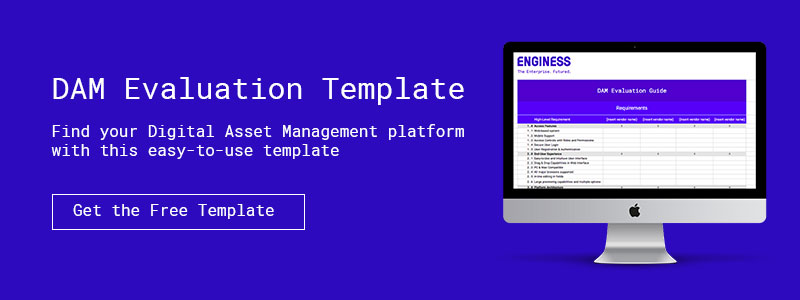Behind maybe only the media industry, the education sector is an asset generating machine. Consider, for instance, a small university. Lectures, slides, presentations, exams, articles, reports, enrolment documents, financial aid documents, healthcare documents, HR documents… The list is truly endless.
Today, we’re going to look into the 4 must-have features and functions for the education sector when it comes to choosing a Digital Asset Management (DAM) system.
1. Software as a Service (SaaS) pricing
This might be a bit controversial, but hear us out. SaaS products are structured so that the software buyer buys access to a tool based on some recurring usage rate. This is usually per user, per month, but there are other options.
There are a couple of benefits worth calling out here:
-
Companies rely on recurring revenue to make a profit, so they’re heavily incentivized to give their clients an incredible experience and continuously valuable product.
-
You only need to buy what you need, since you can scale your usage up or down very easily.
-
Your total cost of ownership is almost always lower in the long run.
-
Costs are shifted from capital outlay to operations, easing cashflow challenges and consolidating cash during implementation.
2. Robust metadata tagging
Metadata is basically the data associated with every single asset.
For instance, if you have an enrolment form, that might have metadata the tells you the year it relates to it, the associated department (admissions), the format of the file (PDF), and more. This metadata is what allows a DAM to search and locate files and make those assets available to end-users.
We recommend a metadata structure that:
-
Can be used by workflow processes
-
Enables rapid keyword search
-
Can have multiple values attached to each asset
-
Can be customized to suit the needs of the institution.

3. Cloud-based options
Broadly speaking, cloud-based DAMs are when the software itself, and any data it manages, is stored in a data center somewhere and accessed via a web interface.
The benefit is that software builders can focus on creating an incredible user experience and a great product, while the datacenter can do things like build and manage the underlying hardware.
In short, it means that everyone does what their good at, which delivers a better solution for a lower cost than trying to do everything yourself. It’s pretty simple specialization.
So, one requirement we think is a must is cloud-based options. Whether this is a total cloud deployment (software + data on the cloud) or a hybrid option (usually software on the cloud + data managed locally), it depends on the needs of the organization. But when you’re evaluating DAMs, cloud options should be a requirement.
4. Analytics
Analytics are something that are often overlooked when DAM options are being evaluated by education sector leaders.
After all, who cares about what assets are used by who? But in reality, analytics on your DAM system can be incredibly revealing about what assets are useful, who uses them, and when. And this can help in all kinds of ways.
For instance, say you’re a university and you want to increase your public profile. How you do know which academics and research projects to hero?
By looking at your DAM analytics, you could get a sense for what people are looking at and who’s looking at it to sift through and find the right hero for the job.
Alternatively, say you were a private school with lots of admissions information and collateral. You could use your DAM data to see what assets are looked at again and again, and which ones are ignored to help optimize collateral creation processes.
Other use cases include folding DAM data into your analytics, sales, and recruitment processes, web processes and workflows, class selection, resource allocation, net new content creation, research, and more.
Summary
For the education sector, we think that a DAM is a must-have asset. It’s a powerful tool that can let universities, colleges, high schools, and other institutions effectively take control of the goldmine of content and assets they’re currently sitting on to make both staff and organization’s run more smoothly.
But not all DAMs are created equal. Given the unique challenges of the education sector, we think that a DAM should:
